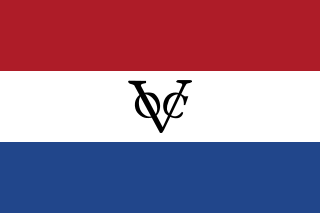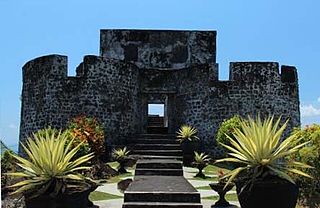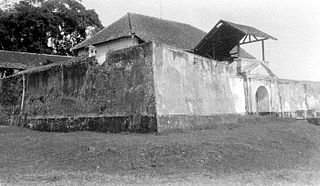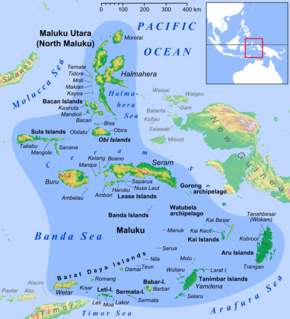 W
WThe Dutch East India Company, officially the United East India Company, was a megacorporation founded by a government-directed amalgamation of several rival Dutch trading companies (voorcompagnieën) in the early 17th century. It was established on 20 March 1602, as a chartered company to trade with Mughal India during the period of proto-industrialization, from which 50% of textiles and 80% of silks were imported, chiefly from its most developed region known as Bengal Subah. In addition, the company traded with Indianised Southeast Asian countries when the Dutch government granted it a 21-year monopoly on the Dutch spice trade. It has been often labelled a trading company or sometimes a shipping company. However, the VOC was in fact a proto-conglomerate, diversifying into multiple commercial and industrial activities such as international trade, shipbuilding, and both production and trade of East Indian spices, Indonesian coffee, Formosan sugarcane, and South African wine. The company was a transcontinental employer and a corporate pioneer of outward foreign direct investment at the dawn of modern capitalism. In the early 1600s, by widely issuing bonds and shares of stock to the general public, VOC became the world's first formally listed public company.
 W
WAmbon was a governorate of the Dutch East India Company, consisting of Ambon Island and ten neighbouring islands. Steven van der Hagen captured Fort Victoria on 22 February 1605 from the Portuguese in the name of the Dutch East India Company. Until 1619, Ambon served as the capital of the Dutch possessions in East Asia. In that year Batavia was founded to function as the staple port for the Dutch East India Company in Asia. The island was the world center of clove production until the 19th century. The Dutch prohibited the rearing of the clove-tree in all the other islands subject to their rule, in order to secure the monopoly to Ambon.
 W
WThe Banda Islands are a volcanic group of ten small volcanic islands in the Banda Sea, about 140 km (87 mi) south of Seram Island and about 2,000 km (1,243 mi) east of Java, and constitute an administrative district (kecamatan) within the Central Maluku Regency in the Indonesian province of Maluku. The main town and administrative centre is Bandanaira, located on the island of the same name. They rise out of 4-to-6-kilometre deep ocean and have a total land area of approximately 172 square kilometres (66 sq mi). They had a population of 18,544 at the 2010 Census. Until the mid-19th century the Banda Islands were the world's only source of the spices nutmeg and mace, produced from the nutmeg tree. The islands are also popular destinations for scuba diving and snorkeling.
 W
WThe Banda Islands were a governorate of the Dutch East India Company. The governorate comprised Banda Neira, Banda Besar, Pulau Ai, Run, Banda Api, and some smaller islands.
 W
WDejima was a Portuguese and subsequently Dutch trading post at Nagasaki, Japan from 1634 to 1854. Dejima was also the location for trade with the Chinese at the time, and thus the only place designated for foreign trade and exchange during the historical Japanese Edo period.
 W
WThe Dutch East India Company was a chartered company which issued a considerable series of coinage in bronze, silver and gold for its territories in the Far East between 1602 and 1799.
 W
WThe Dutch East India Company missions to Edo were regular tribute missions to the court of the Tokugawa shōgun in Edo to reassure the ties between the Bakufu and the Opperhoofd. The Opperhoofd of the Dutch factory in Dejima and his attendants were escorted by the Japanese to Edo where they presented exotic and elaborate gifts to the shōgun: clocks, telescopes, medicines, artillery and rare animals were usual gifts of the tribute missions. The shōgun would correspond at the same time with gifts to the Dutch. The tribute system, as in China, served to enhance the idea of the shōgun's supremacy to his subjects.
 W
WSuratte or Soeratte was a directorate of the Dutch East India Company between 1616 and 1795, with its main factory in the city of Surat. Surat was an important trading city of the Mughal Empire on the river Tapti, and the Portuguese had been trading there since 1540. In the early 17th century, Portuguese traders were displaced by English and Dutch traders.
 W
WThe Dutch–Portuguese War was an armed conflict involving Dutch forces, in the form of the Dutch East India Company and the Dutch West India Company, against the Portuguese Empire. Beginning in 1602, the conflict primarily involved the Dutch companies invading Portuguese colonies in the Americas, Africa, India and the Far East. The war can be thought of as an extension of the Eighty Years' War being fought in Europe at the time between Spain and the Netherlands, as Portugal was in a dynastic union with the Spanish Crown after the War of the Portuguese Succession, for most of the conflict. However, the conflict had little to do with the war in Europe and served mainly as a way for the Dutch to gain an overseas empire and control trade at the cost of the Portuguese. English forces also assisted the Dutch at certain points in the war. Because of the commodity at the center of the conflict, this war would be nicknamed the Spice War.
 W
WFort Anké was a fort located in North Jakarta, Indonesia. It was built by the Dutch East India Company in 1657 along the river of the same name, to the west of the city of Jakarta. Historical names for the fort include: Anckee, Anke, Ankee.
 W
WFort Belgica is a 17th-century fort in Banda Neira, Banda Islands, Maluku Islands, Indonesia. The fort acted as a fortification system for the islands of Banda where during the period, the only place in the world where nutmeg was produced.
 W
WFort Kalamata is a coastal star fort that was built by the Portuguese on the island of Ternate in Indonesia's Maluku Islands. Formerly known as Benteng Kayu Merah because it is located in Kayu Merah village, Originally the fort was named Santa Lucia, but later it became famous for Fort Kalamata. Kalamata itself comes from the name Pengeran Kalamata, the younger brother of the Sultan of Ternate Madarsyah
 W
WFort Oranje is a 17th-century Dutch fort located at the center of Ternate City on the island of Ternate, one of the Moluccas in Indonesia. The fort is the largest in Ternate Island. Fort Oranje was once the capital of Dutch East India Company's trade empire in Asia until it was moved to Batavia.
 W
WFort Tolukko is a small fortification on the east coast of Ternate facing Halmahera. It was one of the colonial forts built to control the trade in clove spices, which prior to the eighteenth century were only found in the Maluku Islands. It has been variously occupied by the Portuguese, the native Ternate Sultanate, the Dutch, the British and the Spanish. It was abandoned as a fort in 1864, renovated in 1996, and is now a tourist attraction.
 W
WFort Vastenburg, also Fort Surakarta, is an 18th-century Dutch fort located in Gladak, Surakarta, Indonesia. A landmark of Surakarta, the fort faces polemics related with multiple owners claiming different parts of the fort. As a result, the fort remains abandoned and threatened to be demolished by various private parties claiming the fort's ownership.
 W
WFort Willem I, known in Indonesian/Javanese as Benteng Pendem Ambarawa, is a 19th-century Dutch fortress in Ambarawa, Central Java, Indonesia.
 W
WFort Willem II of Ungaran is a late 18th-century Dutch-built fort located in Ungaran, in the Semarang Regency, Central Java, Indonesia. It was constructed to guard a trade route in central Java. The fort is the place where Prince Diponegoro was imprisoned while waiting for his judgment in Batavia and further exile to Makassar. The fort is currently used as a dormitory for the families of Indonesian police personnel.
 W
WThe Governor of Formosa was the head of government during the Dutch colonial period in Taiwan, which lasted from 1624 to 1662. Appointed by the Governor-General of the Dutch East Indies in Batavia, the Governor of Formosa was empowered to legislate, collect taxes, wage war and declare peace on behalf of the Dutch East India Company (VOC) and therefore by extension the Dutch state.
 W
WWillem Janszoon made the first recorded European landing on the Australian continent in 1606, sailing from Bantam, Java, in the Duyfken. As an employee of the Dutch East India Company, Janszoon had been instructed to explore the coast of New Guinea in search of economic opportunities. He had originally arrived in Dutch East Indies from the Netherlands in 1598 and became an officer of the VOC on its establishment in 1602.
 W
WA Landdag was a political ceremony staged regularly by Dutch East India Company (VOC) authorities during the period of Dutch rule of Taiwan, known then as Formosa. This mass gathering of Dutch colonists and their aboriginal Formosan subjects was conceived as a device through which the Dutch, by means of a calculated display of power, prestige and paternal largesse, sought to cement their authority and the legitimacy of their rule over the native population. The Dutch word Landdag, sometimes also called rijksdag on Dutch Formosa, is roughly equivalent to the English word Diet.
 W
WThe Maluku Islands or the Moluccas (Molukken) are an archipelago in eastern Indonesia. Tectonically they are located on the Halmahera Plate within the Molucca Sea Collision Zone. Geographically they are located east of Sulawesi, west of New Guinea, and north and east of Timor.
 W
WThe Battle of Ronas Voe was a naval engagement between the English Royal Navy and the Dutch East India ship Wapen van Rotterdam on 14 March 1674 in Ronas Voe, Shetland as part of the Third Anglo-Dutch War. Having occurred 23 days after the signing of the Treaty of Westminster, it is likely to have been the final battle of the Third Anglo-Dutch War.
 W
WThe Sino-Dutch conflicts were a series of conflicts between the Ming dynasty of China and the Dutch East India Company over trade and land throughout the 1620s, 1630s, and 1662. The Dutch were attempting to compel China to accede to their trade demands, but the Chinese defeated the Dutch forces.
 W
WThe Maluku Islands or the Moluccas (Molukken) are an archipelago in eastern Indonesia. Tectonically they are located on the Halmahera Plate within the Molucca Sea Collision Zone. Geographically they are located east of Sulawesi, west of New Guinea, and north and east of Timor.
 W
WTrunajaya rebellion or Trunajaya War was the ultimately unsuccessful rebellion waged by the Madurese prince Trunajaya and fighters from Makassar against the Mataram Sultanate and its Dutch East India Company (VOC) supporters in Java during the 1670s.